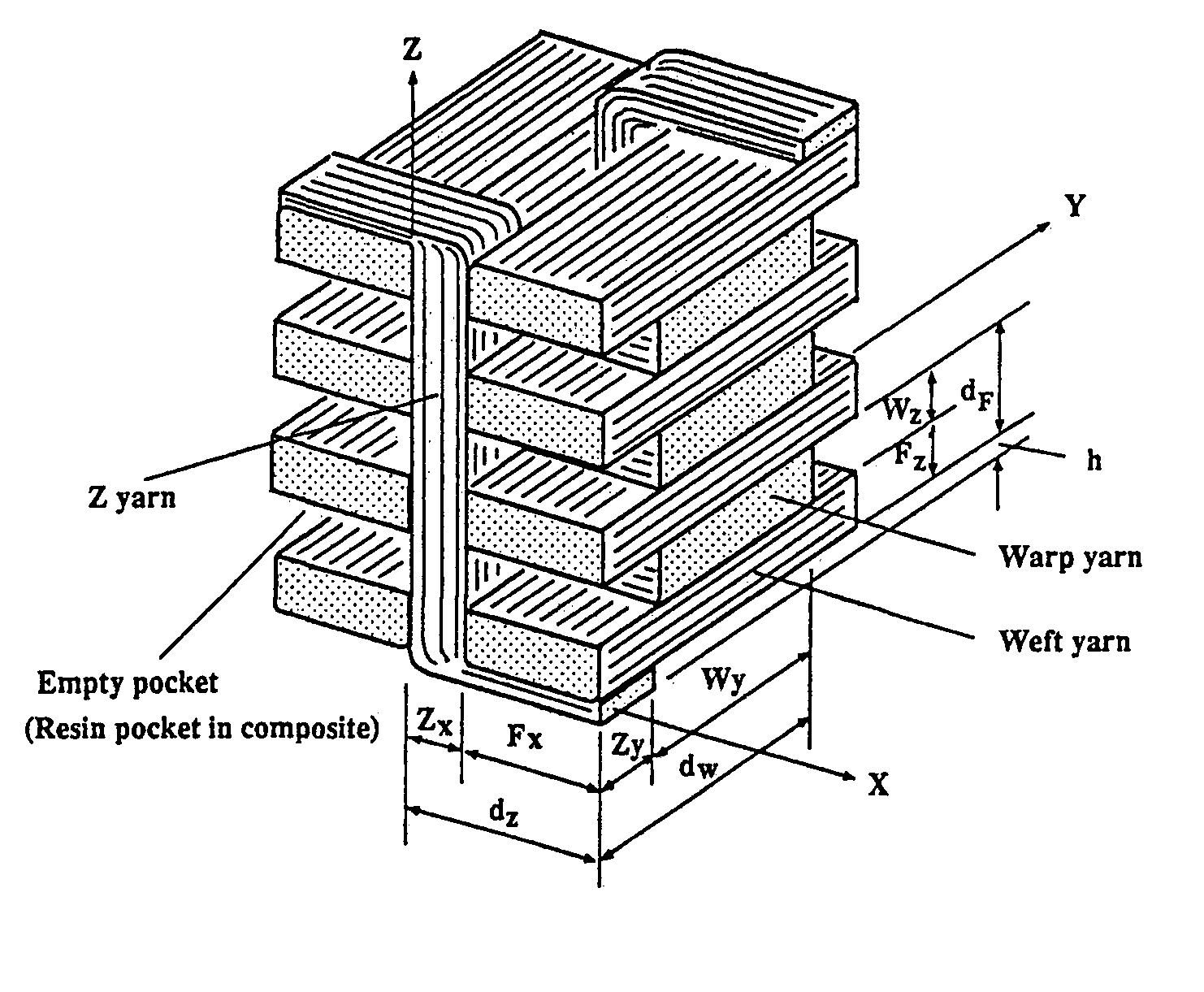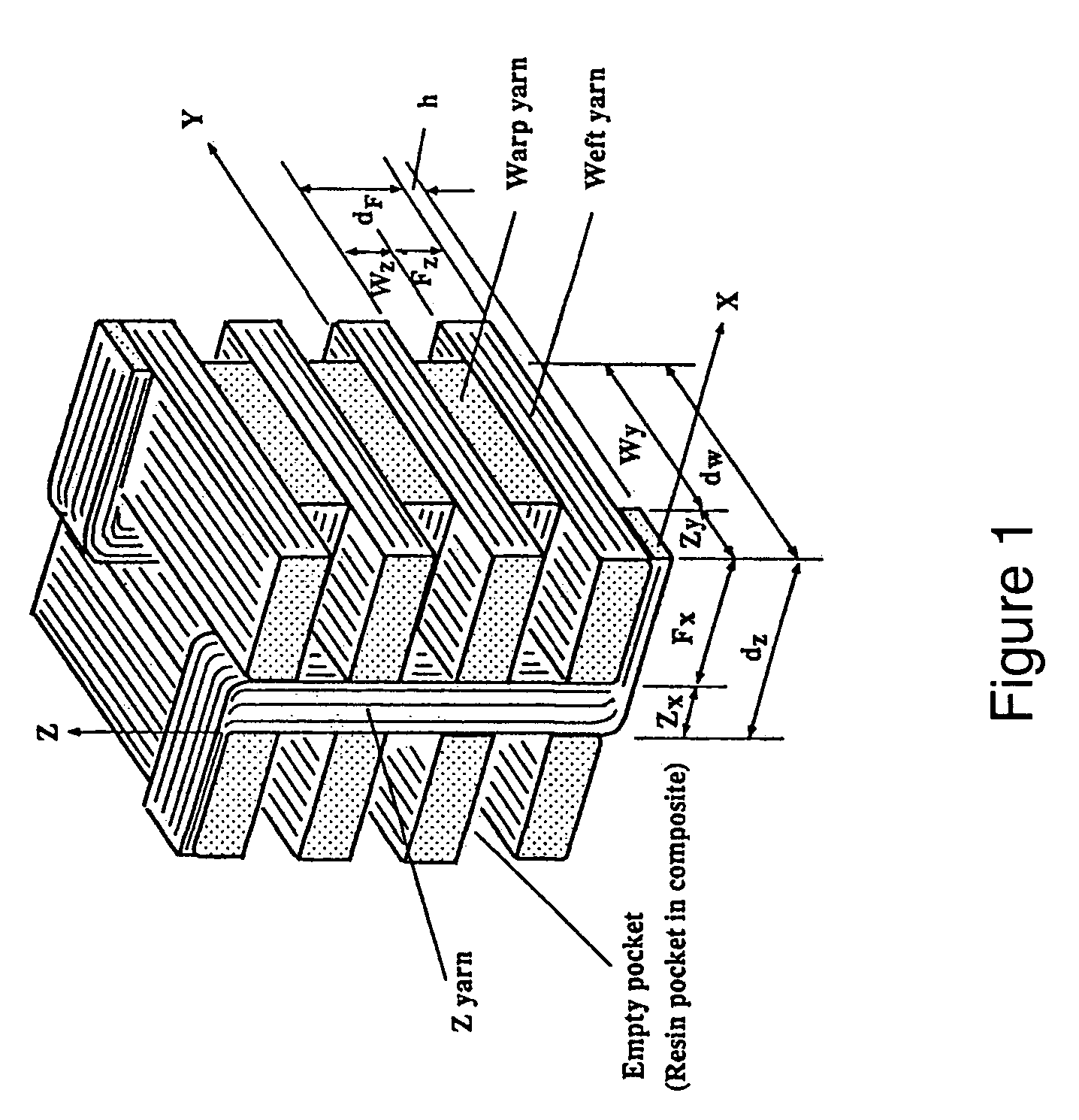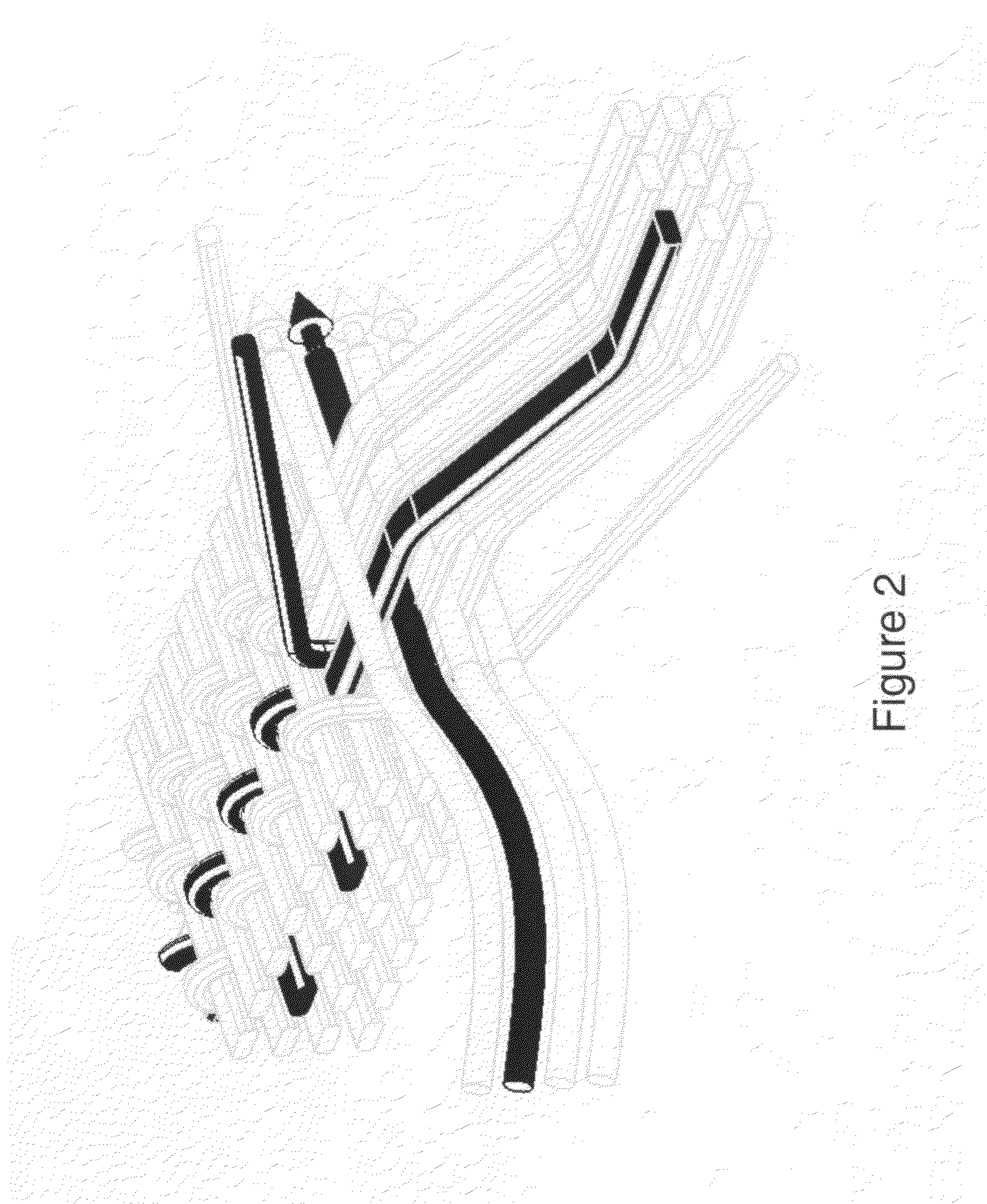3-D woven fabric and methods for thick preforms
a woven fabric and preform technology, applied in the field of weaving, can solve the problems of inability to manufacture thick 3-d woven fabrics or preforms, inability to conventionally weave and selvage formation,
- Summary
- Abstract
- Description
- Claims
- Application Information
AI Technical Summary
Benefits of technology
Problems solved by technology
Method used
Image
Examples
Embodiment Construction
[0018]In the following description, like reference characters designate like or corresponding parts throughout the several views. Also in the following description, it is to be understood that such terms as “forward,”“rearward,”“front,”“back,”“right,”“left,”“upwardly,”“downwardly,” and the like are words of convenience and are not to be construed as limiting terms.
[0019]Referring now to the drawings in general, the illustrations are for the purpose of describing a preferred embodiment of the invention and are not intended to limit the invention thereto.
[0020]3-D woven fabrics or preforms having a substantial thickness and, preferably having non-looped selvages constructed and configured according to the present invention are preferably formed with substantially rectangular cross-sectional shapes and with a relatively thick z-direction dimension, when compared to prior art 3-D woven fabrics. 3-D woven fabrics are known in the prior art, in particular being formed according to methods...
PUM
 Login to View More
Login to View More Abstract
Description
Claims
Application Information
 Login to View More
Login to View More - R&D
- Intellectual Property
- Life Sciences
- Materials
- Tech Scout
- Unparalleled Data Quality
- Higher Quality Content
- 60% Fewer Hallucinations
Browse by: Latest US Patents, China's latest patents, Technical Efficacy Thesaurus, Application Domain, Technology Topic, Popular Technical Reports.
© 2025 PatSnap. All rights reserved.Legal|Privacy policy|Modern Slavery Act Transparency Statement|Sitemap|About US| Contact US: help@patsnap.com



